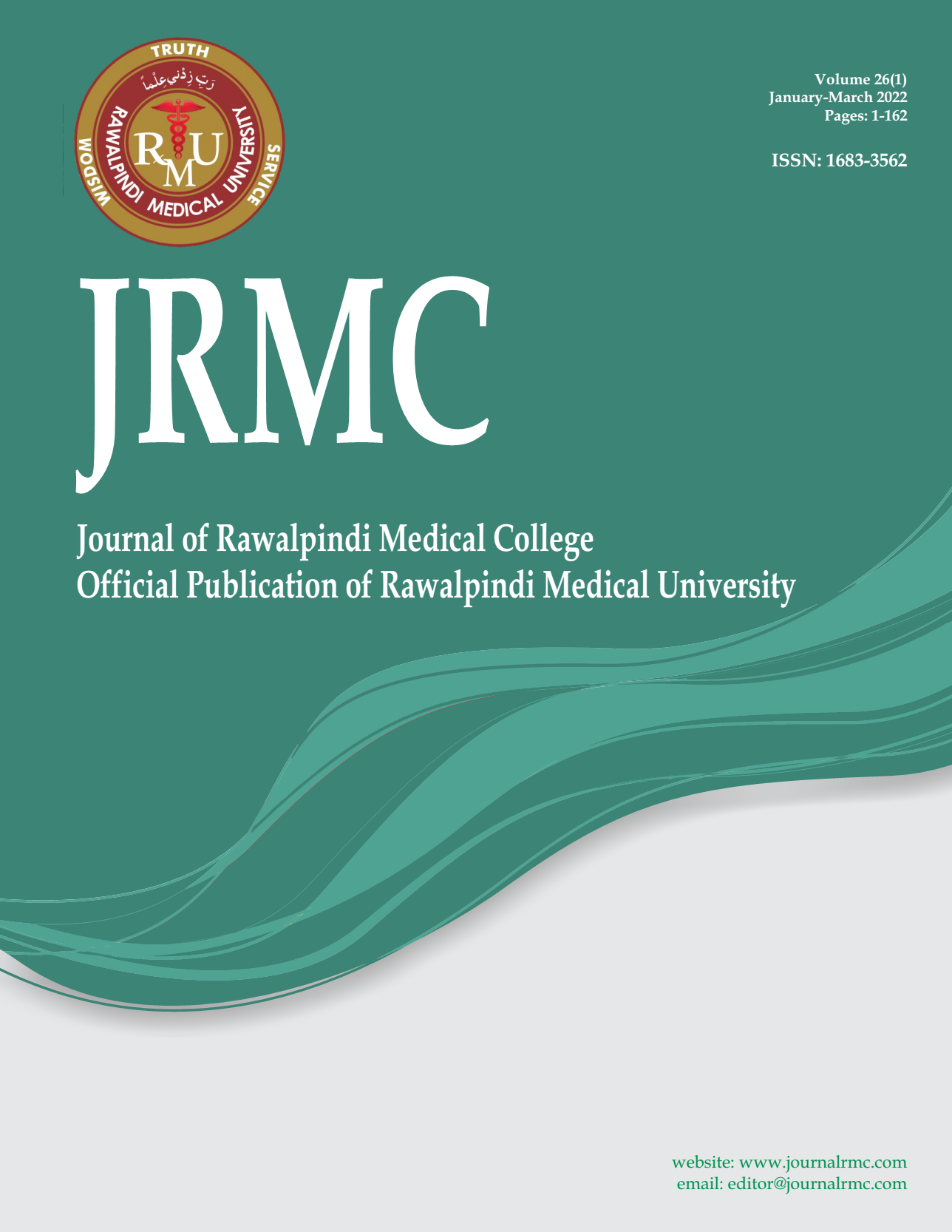Abstract
ABSTRACT
Objective: To evaluate the clinicopathological and immunohistochemical features of Solitary Fibrous Tumor (SFT) in our hospital.
Materials and Methods: This is a retrospective descriptive study. All cases of solitary fibrous tumor diagnosed on morphology from January 2012 till June 2018 were retrospectively retrieved from the histopathology department of a tertiary care hospital. The hematoxylin and eosin (H&E) stained slides as well as IHC slides were reviewed. Diagnosis was established on current standard histopathological and IHC criteria provided by World Health Organization (WHO) Classification of soft tissue tumors.8
Four micron thick sections from paraffin blocks were made of each sample and mounted onto glass slides. IHC staining for anti-STAT6 antibody (BioSB antibody, Roche kit) was available in our hospital from 2018 onwards. It was performed on all suspected cases of SFT using manufacturer’s instructions. The quality of expression was graded and interpreted as absent staining, weak expression or strong expression. The samples were graded based on diffuse (>50%) versus localized (<50% of tumor cells) staining, as well as localization of the stain within the cell (nuclear only, cytoplasmic only or both nuclear and cytoplasmic).
Approval for acquisition of the tissue specimens and supporting case information and retrieval of glass slides was obtained by Institutional Review Board & Ethics Committee.
Results: There were 25 cases of SFT in our study involving 12 males and 13 females. According to WHO 2013 criteria, eleven cases in our study were classified as malignant (44%) while 14 cases were in the benign group (56%). STAT6 was available in our hospital in 2018 and since then all the subsequent cases of SFT in the present study (seven in number) came positive for STAT6 (sensitivity 100%) while CD34 which was done throughout the duration of this study (January 2012-June 2018) was positive in 20 cases (86.9%) and negative in three cases (13%). Follow-up of 16 cases is available. Out of a total 14 benign cases, follow-up of only seven (50%) cases could be traced and from a total of 11 malignant cases, follow-up of nine (81%) cases could be sought. All benign cases remained disease free while among the nine malignant cases: three (33.3%) patients died, recurrence was reported in four (44.4%) patients. One (11.1%) patient remained disease free while one (11.1%) patient is alive and on treatment.
Conclusion
Malignancy in SFT is common and must be evaluated meticulously. STAT6 is a highly sensitive marker for the diagnosis of SFTs. Immunohistochemical panel including STAT6, CD34, CD99 and bcl-2 support morphology. Malignant behavior is common and is evaluated by meticulous analysis of gross/microscopic features and close follow-up of the patient. However further advances in the genetics and new tumor markers is in progress and must be followed for definitive decision of tumor behavior and its subsequent treatment.
Keywords: solitary fibrous tumor, STAT6, CD34

